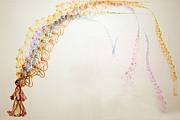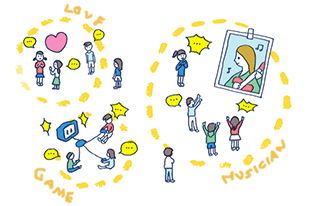依存症のしくみ。
『2008年タイム・アニュアル』より。(643words 分野:NS 難易度:中)
1 The bad news: addiction to harmful substances and behaviors continues to be a major problem in the U.S. The good news: over the past 10 years, researchers have made real progress in understanding the physical sophisticated technologies, including fMRIS and PET scans, investigators have begun to figure out exactly what goes wrong in the brain of an addict – which neurotransmitting chemicals are out of balance and what regions of the brain are affected. They are developing a more detailed understanding of how deeply and completely addiction can affect the brain, by hijacking memory-making processes and by exploiting emotions. And that’s helped them design new drug treatments that are showing promise in cutting off the craving that drives an addict irresistibly toward relapse, a risk facing even the most dedicated abstainer.
The bad news: addiction to harmful substances and behaviors continues to be a major problem in the U.S. The good news: over the past 10 years, researchers have made real progress in understanding the physical sophisticated technologies, including fMRIS and PET scans, investigators have begun to figure out exactly what goes wrong in the brain of an addict – which neurotransmitting chemicals are out of balance and what regions of the brain are affected. They are developing a more detailed understanding of how deeply and completely addiction can affect the brain, by hijacking memory-making processes and by exploiting emotions. And that’s helped them design new drug treatments that are showing promise in cutting off the craving that drives an addict irresistibly toward relapse, a risk facing even the most dedicated abstainer.
2 Researchers exploring the brain’s reward system, powered largely by the neurotransmitter dopamine, are focusing on the family of dopamine receptors that populate nerve cells and bind to the compound. The hope is that if you can dampen the effect of the brain chemical that carries the pleasurable signal, you can group of dopamine receptors, called D3, seems to multiply in the presence of cocaine, methamphetamine and nicotine, making it possible for more of the drug to enter and activate nerve cells.
Researchers exploring the brain’s reward system, powered largely by the neurotransmitter dopamine, are focusing on the family of dopamine receptors that populate nerve cells and bind to the compound. The hope is that if you can dampen the effect of the brain chemical that carries the pleasurable signal, you can group of dopamine receptors, called D3, seems to multiply in the presence of cocaine, methamphetamine and nicotine, making it possible for more of the drug to enter and activate nerve cells.
3 If dopamine receptors are the gas, the brain’s own inhibitory systems act as the brakes. But in addicts, this natural camping circuit, called GABA (gamma-amino-butyric acid), appears to be faulty, so the brain never appreciates that it has been satiated.
If dopamine receptors are the gas, the brain’s own inhibitory systems act as the brakes. But in addicts, this natural camping circuit, called GABA (gamma-amino-butyric acid), appears to be faulty, so the brain never appreciates that it has been satiated.
4 Enter vigabatrin, an antiepilepsy drug marketed in 60 countries (but not yet in the U.S.). An effective GABA booster, vigabatrin helps epileptics suppress the overactive motorneurons that can cause muscles to go into spasm. Suspecting that enhancing the GABA levels in addicts’ brains might help them control their drug cravings, two U.S. biotech firms are studying vigabatrin’s effect on methamphetamine and cocaine users. So far, in animals, vigabatrin prevents the breakdown of GABA so that more of the inhibitory compound can be stored in whole form in nerve cells. That way, more of it could be released when those cells are activated by a hit from a drug. Researchers hope vigabatrin may be effective against all forms of addiction.
Enter vigabatrin, an antiepilepsy drug marketed in 60 countries (but not yet in the U.S.). An effective GABA booster, vigabatrin helps epileptics suppress the overactive motorneurons that can cause muscles to go into spasm. Suspecting that enhancing the GABA levels in addicts’ brains might help them control their drug cravings, two U.S. biotech firms are studying vigabatrin’s effect on methamphetamine and cocaine users. So far, in animals, vigabatrin prevents the breakdown of GABA so that more of the inhibitory compound can be stored in whole form in nerve cells. That way, more of it could be released when those cells are activated by a hit from a drug. Researchers hope vigabatrin may be effective against all forms of addiction.
5 Another important discovery: evidence is building to support the 90-day rehabilitation model, which is used by Alcoholics Anonymous (new AA members are urged to attend daily meetings for their first 90 days) and is the length of most stints in drug-treatment programs. It turns out that this is just about how long it takes for the brain to reset itself and shake off the immediate influence of a drug. Researchers at Yale University have documented what they call the sleeper effect – a gradual re-engaging of proper decision making and analytical functions in the brain’s prefrontal cortex – after an addict has abstained for at least 90 days.
Another important discovery: evidence is building to support the 90-day rehabilitation model, which is used by Alcoholics Anonymous (new AA members are urged to attend daily meetings for their first 90 days) and is the length of most stints in drug-treatment programs. It turns out that this is just about how long it takes for the brain to reset itself and shake off the immediate influence of a drug. Researchers at Yale University have documented what they call the sleeper effect – a gradual re-engaging of proper decision making and analytical functions in the brain’s prefrontal cortex – after an addict has abstained for at least 90 days.
6 This work has led to research on cognitive enhancers, or compounds that may amplify connections in the prefrontal cortex to speed up the natural reversal. Such enhancement would give the higher regions of the brain a fighting chance against the amygdale, a more basal region that plays a role in priming the dopamine-reward system when certain cues suggest imminent pleasure – anything from the sight of white powder that looks like cocaine to spending time with friends you used to drink with. It’s that conditioned reflex that unleashes a craving.
This work has led to research on cognitive enhancers, or compounds that may amplify connections in the prefrontal cortex to speed up the natural reversal. Such enhancement would give the higher regions of the brain a fighting chance against the amygdale, a more basal region that plays a role in priming the dopamine-reward system when certain cues suggest imminent pleasure – anything from the sight of white powder that looks like cocaine to spending time with friends you used to drink with. It’s that conditioned reflex that unleashes a craving.
7 More and more, scientists say that extinguishing urges is not simply a matter of getting one’s cravings for substances or behavior to fade but of helping the addict learn a new form of conditioning, a sort of rewiring that allows the brain’s cognitive power to shout down the amygdale and other lower regions. Or, as recovering alcoholics say in AA: “Recovery is a process, not an event; it takes time.”
More and more, scientists say that extinguishing urges is not simply a matter of getting one’s cravings for substances or behavior to fade but of helping the addict learn a new form of conditioning, a sort of rewiring that allows the brain’s cognitive power to shout down the amygdale and other lower regions. Or, as recovering alcoholics say in AA: “Recovery is a process, not an event; it takes time.”
(Time Annual 2008. p.102-103)
『2008年タイム・アニュアル』より。(643words 分野:NS 難易度:中)
1
2
3
4
5
6
7
(Time Annual 2008. p.102-103)
|
|
|
|
コメント(2)
Scientists have been investigating the exact way how we addict to substances and behaviors. The recent new technologies make it possible for them to detect what kinds of chemicals and which parts of the brain are mainly related to addiction. Researchers found that one of the neurotransmitters, called dopamine, which conveys the pleasurable signal, plays a significant role in the brain’s reward system. Drugs compulsively stimulate it and its receptors to increase rewards; on the other hand, GABA suppresses the current of dopamine and keeps the balance of it. (Heroin and morphine inhibit the release of GABA.) There are several effective ways to keep away from drugs. Vigabatrin is an antiepilepsy drug which supports the work of GABA in brain and used in 60 countries. 90-day rehabilitation model is also useful especially for Alcoholics Anonymous. Cognitive enhancement would be necessary to fight with the daily triggers which unloose a sudden craving, which also reminds us the important of learning how to deal with own customs and urges as well as of the medicinal support.
- mixiユーザー
- ログインしてコメントしよう!
|
|
|
|
Read 更新情報
-
最新のイベント
-
まだ何もありません
-
-
最新のアンケート
-
まだ何もありません
-























